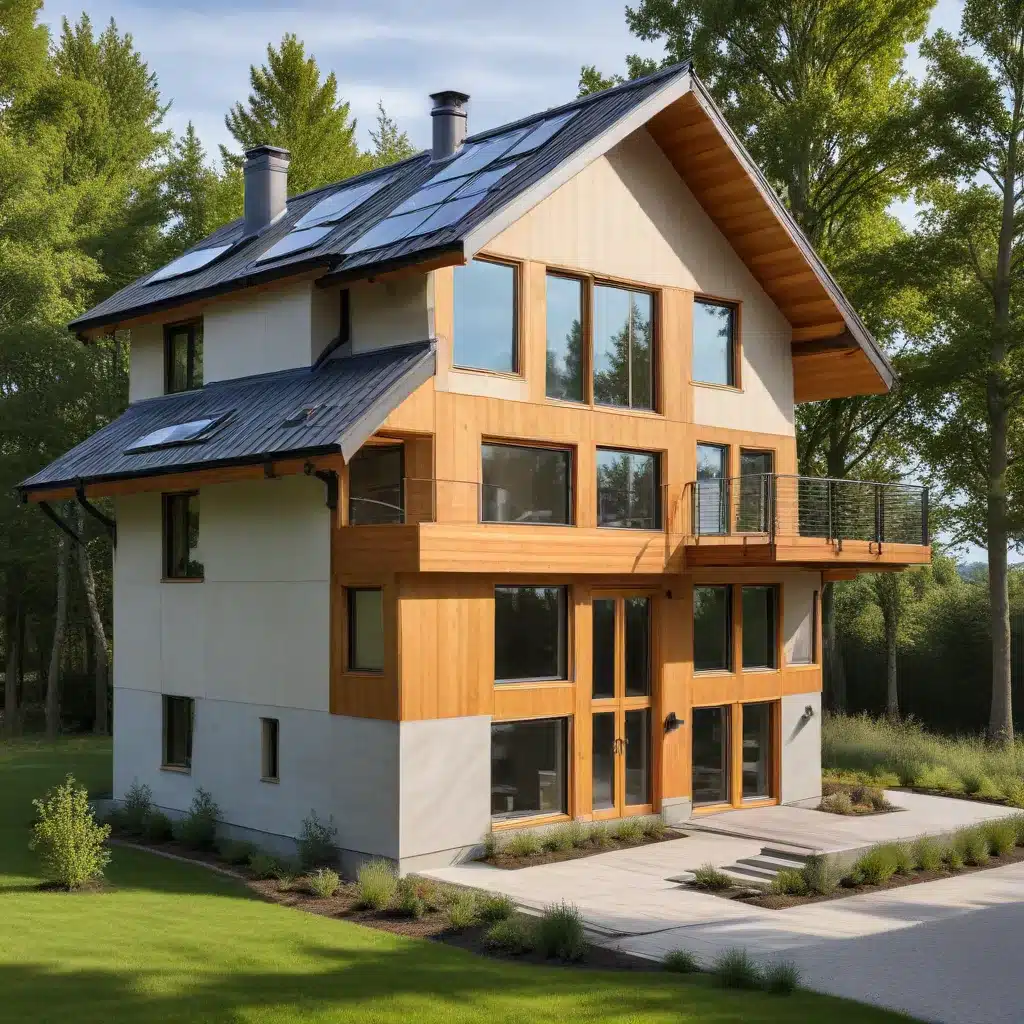
Europe is at the forefront of the global shift towards sustainable buildings that deliver exceptional energy performance and environmental benefits. At the heart of this movement is the Passive House standard, an evidence-based design approach that has proven its mettle across thousands of projects worldwide. Beyond the Passive House, leading-edge buildings are now pushing the boundaries of what’s possible, achieving net-zero energy, positive-energy, and even carbon-negative operation.
Passive House Design Principles
The Passive House standard is founded on three key pillars: energy efficiency, thermal comfort, and indoor air quality. By minimizing heating and cooling demands through a highly insulated, airtight building envelope, Passive House designs leverage passive solar gains and reduce the need for mechanical systems. This results in buildings that use 80-90% less energy for heating and cooling compared to conventional structures.
Thermal comfort is ensured through the use of advanced window technologies, thermal bridge-free construction, and balanced mechanical ventilation with heat recovery. The outcome is a steady, draft-free interior climate that maintains comfort even during extreme outdoor temperatures. Importantly, Passive House also prioritizes indoor air quality, with the ventilation system continuously supplying a steady flow of fresh, filtered air.
Net-Zero Energy Buildings
Taking the Passive House concept further, net-zero energy buildings produce as much renewable energy on-site as they consume over the course of a year. This is achieved through a combination of aggressive demand reduction measures and on-site renewable energy generation. Highly efficient building envelopes, appliances, and lighting work in tandem with technologies like solar photovoltaics, ground-source heat pumps, and energy storage to create a balanced, self-sufficient building.
Beyond just energy, some net-zero projects are also pursuing water and waste neutrality, creating a truly holistic and regenerative built environment. Innovations in building-integrated renewable energy, water recycling, and waste-to-energy systems are enabling this transition.
Positive-Energy Buildings
Pushing the envelope even further, positive-energy buildings generate more renewable energy than they consume, resulting in a surplus that can be exported to the grid. This is made possible by pairing ultra-efficient building performance with oversized on-site renewable energy systems, often including battery storage to maximize grid integration and self-consumption.
The energy surplus from positive-energy buildings can play a crucial role in decarbonizing the broader energy system, providing clean, distributed generation to offset fossil fuel-based power. As the technology continues to advance and costs decline, positive-energy buildings are poised to become an integral part of the transition to a renewable-powered future.
Carbon-Negative Buildings
Going beyond net-zero or positive-energy, the most ambitious projects are now exploring carbon-negative buildings – structures that actually remove more greenhouse gases from the atmosphere than they emit over their entire lifecycle. This is achieved through a combination of strategies:
Embodied carbon reduction: Minimizing the carbon footprint of building materials and construction processes, often by utilizing low-carbon or bio-based materials like cross-laminated timber.
Carbon sequestration: Incorporating natural carbon sinks like urban forests, agricultural lands, or even carbon-trapping building materials that lock away atmospheric CO₂.
Lifecycle assessment: Rigorously accounting for a building’s total carbon impact, from raw material extraction to end-of-life, to ensure net-negative emissions.
The Living Building Challenge, a leading regenerative design framework, is at the forefront of this carbon-negative movement, challenging builders to create structures that are truly restorative to the environment.
Technological Advancements
Building Envelope Innovations
Passive House and beyond rely on cutting-edge building envelope technologies to push the boundaries of energy efficiency. High-performance insulation materials, such as vacuum insulated panels and aerogels, provide unparalleled thermal resistance in compact profiles. Advanced window systems with multiple low-E coatings, gas fills, and thermally broken frames minimize heat transfer while maximizing natural daylight. Innovative thermal bridge mitigation strategies, from carefully designed assemblies to integrated structural elements, eliminate pathways for unwanted heat flow.
Renewable Energy Systems
Renewable energy is the linchpin of net-zero, positive-energy, and carbon-negative buildings. Solar photovoltaic systems, both rooftop and building-integrated, are a ubiquitous feature, often supplemented by small-scale wind turbines or geothermal heat pumps for heating and cooling. Advanced energy storage technologies, from lithium-ion batteries to thermal storage, enable these buildings to effectively manage their energy production and consumption.
Occupant Behavior and Engagement
User Experience and Comfort
Passive House and high-performance buildings are designed with occupant comfort and well-being at the forefront. Adaptive thermal comfort models, which account for individual adaptability to temperature variations, ensure a consistent and pleasant indoor climate. Intelligent building controls and sensors allow for fine-tuned management of energy systems, while also providing valuable data to help occupants understand and optimize their usage.
Societal and Environmental Impact
Beyond the buildings themselves, the broader societal and environmental impacts of Passive House and carbon-negative construction are profound. These structures dramatically reduce carbon footprints, mitigating climate change while also improving indoor air quality – a critical factor for human health and productivity. When deployed at scale, they can transform entire sustainable neighborhoods, catalyzing a transition to a more resilient, decarbonized built environment.
Policy and Regulatory Frameworks
Sustainable Building Codes
Governments across Europe are increasingly mandating high-performance building standards to drive the transition to a net-zero built environment. The Passive House standard has been incorporated into national and local building codes, ensuring that new construction meets stringent energy efficiency and comfort criteria. Meanwhile, some jurisdictions are going further, implementing net-zero energy or even carbon-neutral requirements for all new buildings.
Incentives and Financing
To support the shift to sustainable buildings, policymakers are deploying a suite of financial incentives and innovative financing mechanisms. Renewable energy subsidies, green building tax credits, and energy-efficient mortgages are helping to offset the upfront costs of advanced building technologies. Furthermore, power purchase agreements and green bonds are enabling large-scale, private investment in carbon-negative projects.
The European Union’s ambitious European Green Deal and the related Renovation Wave strategy are prime examples of policy frameworks driving the widespread adoption of Passive House and beyond across the continent. By aligning building regulations, financial incentives, and public-private partnerships, Europe is positioning itself as a global leader in sustainable, high-performance buildings.






